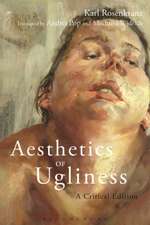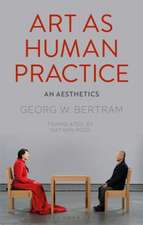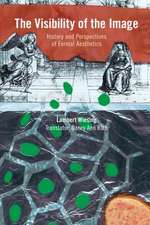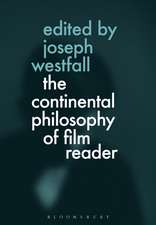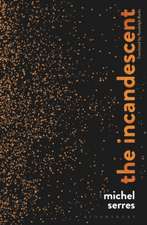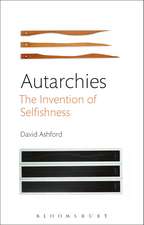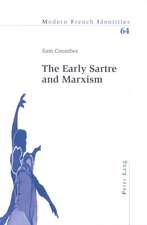Adornment: What Self-Decoration Tells Us About Who We Are
Autor Stephen Daviesen Limba Engleză Paperback – 8 ian 2020
Preț: 159.99 lei
Preț vechi: 173.62 lei
-8% Nou
Puncte Express: 240
Preț estimativ în valută:
30.61€ • 31.97$ • 25.28£
30.61€ • 31.97$ • 25.28£
Carte disponibilă
Livrare economică 26 martie-09 aprilie
Livrare express 11-15 martie pentru 38.57 lei
Preluare comenzi: 021 569.72.76
Specificații
ISBN-13: 9781350120983
ISBN-10: 1350120987
Pagini: 280
Ilustrații: 20 b&w and 20 colour images
Dimensiuni: 138 x 216 x 28 mm
Greutate: 0.36 kg
Editura: Bloomsbury Publishing
Colecția Bloomsbury Academic
Locul publicării:London, United Kingdom
ISBN-10: 1350120987
Pagini: 280
Ilustrații: 20 b&w and 20 colour images
Dimensiuni: 138 x 216 x 28 mm
Greutate: 0.36 kg
Editura: Bloomsbury Publishing
Colecția Bloomsbury Academic
Locul publicării:London, United Kingdom
Caracteristici
Discusses practices dating back 27,000 years ago, including hair, nail, piercings, tattooing and make-up practices in African, Australian and North and South American indigenous cultures uniting them around the central theme of adornment
Notă biografică
Stephen Davies is Distinguished Professor of Philosophy at the University of Auckland, New Zealand. He is an inaugural Fellow of the New Zealand Academy of the Humanities and a Fellow of the Royal Society of New Zealand. He is a former President of the American Society for Aesthetics and Vice-President of the International Association for Aesthetics. He is on the editorial boards of Journal of Aesthetics and Art Criticism, Philosophy Compass, and Rivista di Estetica, he is a consulting editor for Res Musica and Philosophy of Music Education Review, and he is co-editor for aesthetics in Stanford Encyclopedia of Philosophy.
Cuprins
AcknowledgmentsList of IllustrationsPreface1. The Sungir Children2. What Adornment is3. Bodily Adornment Practices4. Aesthetics and Adornment in Prehistory5. Differences Between Men and Women6. Body-Painting and Makeup7. Scarification and Tattoos8. Piercings, Plugs and Jewelry9. Clothing10. Bali: Sungir Writ LargeConclusionBibliographyIndex
Recenzii
The wondrous array of body ornaments pictured here itself adorns a wide-ranging, learned, accessible, and fascinating discussion of aesthetics by distinguished philosopher Stephen Davies. Adornment is not only a feast for the eyes but for the mind.
Decoration is often dismissed as trivial, but Davies shows how deep-seated and functional the human impulse to decorate is. He argues that it is nothing less than one of our most fundamental modes of communication. This fascinating tour of adornment is bound to transform readers' outlook, drawing attention to the aesthetic embellishments that we add to everything we touch.
This work sets itself as the pinnacle of the philosophical debate on adornment and self-decoration. Holding the key-concept of "making special through aesthetic enhancement", Davies enlightens the merging of pleasure, symbolic value and communicative tasks at place in the practice of adorning. The result comforts with sharp analyses and arguments the priority of the aesthetic attitude on any other such as the religious and moral ones.
[W]ritten from a scholarly perspective, with a clarity of writing and little academic jargon, the book can engage anyone interested in the subject.
A great book and very easy to read ... It's highly accessible and easily understood despite the fact that [it deals] with some really complicated concepts.
Decoration is often dismissed as trivial, but Davies shows how deep-seated and functional the human impulse to decorate is. He argues that it is nothing less than one of our most fundamental modes of communication. This fascinating tour of adornment is bound to transform readers' outlook, drawing attention to the aesthetic embellishments that we add to everything we touch.
This work sets itself as the pinnacle of the philosophical debate on adornment and self-decoration. Holding the key-concept of "making special through aesthetic enhancement", Davies enlightens the merging of pleasure, symbolic value and communicative tasks at place in the practice of adorning. The result comforts with sharp analyses and arguments the priority of the aesthetic attitude on any other such as the religious and moral ones.
[W]ritten from a scholarly perspective, with a clarity of writing and little academic jargon, the book can engage anyone interested in the subject.
A great book and very easy to read ... It's highly accessible and easily understood despite the fact that [it deals] with some really complicated concepts.









